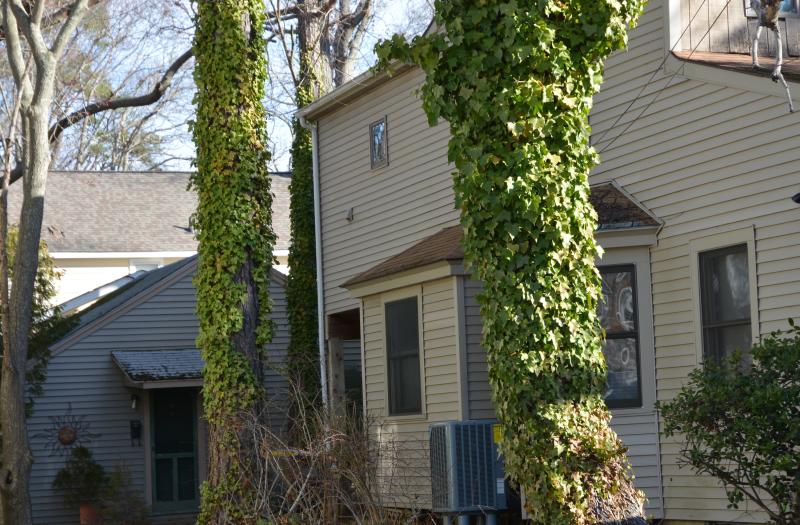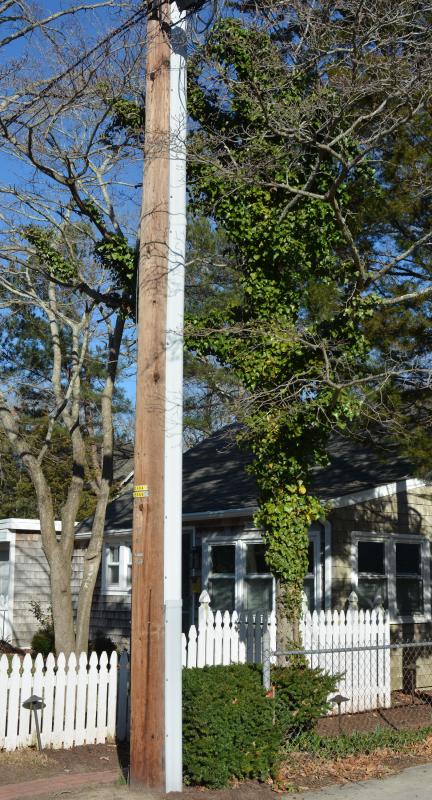Rehoboth committee recommends residents remove English ivy
Looking to control the proliferation of invasive English ivy throughout town, the Rehoboth Beach Trees & Green Infrastructure Committee is recommending property owners take steps to remove the plant on their land.
The committee has been discussing the invasive plant’s proliferation – especially in the north end of town – for the past couple of meetings.
Next to bamboo, ivy is one of the most invasive things a property could have, said City Commissioner Francis ‘Bunky’ Markert, committee chair and liaison to the board of commissioners.
Committee member Jennifer Duncan said English ivy is used for ground cover because it can grow in the shade and sun. English ivy can show up unexpectedly because birds and strong winds can distribute the seeds, she said.
At first glance, said Duncan, English ivy looks pretty and seems to be an inexpensive, easy way to maintain ground cover or add interest to a garden, chimney or side of a house. However, she said, it can escape specific areas quickly, and once established, it can be expensive to eradicate.
Recognizing that the city can’t do anything on private property other than encourage removal, City Arborist Liz Lingo said residents can find alternative plants that look like ivy. She suggested the use of Plants for a Livable Delaware, which was published by the University of Delaware.
This isn’t the first time the city has pursued the removal of invasive ivy. A group of volunteers called the Ivy League helped the city remove ivy from trees in Central and Deer parks on the north side of town in the late 2010s.
Markert said members of the public can contact him if they are aware of ivy hotspots that should be removed. He can be reached at bmarkert@cityofrehoboth.com.
State takes action on invasive plants
Rehoboth Beach is focusing specifically on English Ivy, but the state has also recently taken a more proactive approach to invasive plants. A bill designed to prohibit invasive plant species at their point of sale or delivery into the state was signed into law in early 2021 and went into effect as of July 2022. As part of the law, an invasive plant list was created that includes English ivy and 36 more plants that are known to cause problems.
The full list includes: Amur honeysuckle (Lonicera maackii); Autumn olive (Elaeagnus umbellate); Callery pear (Pyrus calleryana); Chinese wisteria (Wisteria sinensis); Creeping Jenny (Lysimachia nummularia); Creeping water primrose (Ludwigia peploides subsp. glabrescens); English ivy (Hedera helix); European privet (Ligustrum vulgare); European reed (Phragmites australis subsp. australis); European sweetflag (Acorus calamus); Garlic mustard (Alliaria petiolate); Hydrilla (Hydrilla verticillate); Japanese barberry (Berberis thunbergia); Japanese honeysuckle (Lonicera japonica); Japanese knotweed (Fallopia japonica); Japanese pachysandra (Pachysandra terminalis); Japanese stiltgrass (Microstegium vimineum); Lesser celandine (Ficaria verna); Lesser periwinkle (Vinca minor); Marsh dewflower (Murdannia keisak); Mile-a-minute weed (Persicaria perfoliate); Morrow’s honeysuckle (Lonicera morrowii); Multiflora rose (Rosa multiflora); Norway maple (Acer platanoides); Orange daylily (Hemerocallis fulva); Oriental bittersweet (Celastrus orbiculatus); Parrot-feather (Myriophyllum aquaticum); Porcelain berry (Ampelopsis glandulosa); Purple loosestrife (Lythrum salicaria); Spotted knapweed (Centaurea stoebe subsp. micranthos); Tatarian honeysuckle (Lonicera tatarica); Tree of heaven (Ailanthus altissima); Water hyacinth (Eichhornia crassipes); Wineberry (Rubus phoenicolasius); Winged euonymus (Euonymus alatus); Yam-leaved clematis (Clematis terniflora); and Yellow flag iris (Iris pseudoacorus).
Chris Flood has been working for the Cape Gazette since early 2014. He currently covers Rehoboth Beach and Henlopen Acres, but has also covered Dewey Beach and the state government. He covers environmental stories, business stories and random stories on subjects he finds interesting, and he also writes a column called Choppin’ Wood that runs every other week. He’s a graduate of the University of Maine and the Landing School of Boat Building & Design.





















































